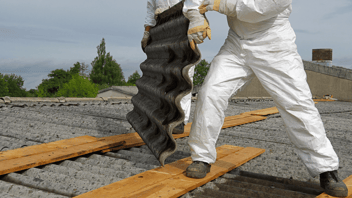According to the U.S. Bureau of Labor Statistics, in 2020, 2.7 million non-fatal work injuries and 4,764 fatal injuries were reported in the workplace. The safety of employees is essential for positive outcomes for businesses. When employees are injured, this puts a halt to business operations. Additionally, injured employees at work may have to be out of work for some time until their doctor clears them to come back to work.
For these reasons and to ensure all workers’ safety, they must follow protocols. When they do not follow these protocols, employers are at risk for citations and, of course, for injuries to occur in the workplace. Although it is the employers' responsibility to maintain safety protocols and ensure that all employees work under safe and proper conditions, that isn't always the case.
Employers sometimes fail to provide appropriate employee training, resulting in workplace hazards that could have been avoided. Other times, employers arrange for the proper training, but employees choose not to follow them appropriately or implement what they have learned. Even worse, employers might be letting employees show up at work every day without taking the appropriate training to ensure their safety and the safety of those around them.
It is always a good measure to keep employees well informed and prepared for any possible hazards and know how to avoid them. Health and safety software that is easily available to employees can assist employers in making sure they are compliant with safety regulations. Additionally, there are random safety inspections of workplaces to ensure employees and employers follow all procedures. When they do not, the appropriate agency cites the employers for not providing safe work environments for their employees.
Fortunately, we have gathered ten common workplace hazards and researched the best ways to avoid them. Read on to better prepare and handle any workplace hazard you may confront.
1. Hazardous Chemicals
Hazardous and toxic chemicals are damaging to people’s health. Depending on the chemicals, people can damage their immune system, reproductive system, and mental health or develop asthma and allergies. When handling hazardous chemicals in the workplace, employees must learn how to do it safely to protect themselves from any possible exposure.
According to OSHA, the Occupational Safety and Health Administration, information about the chemicals in the workplace should be available and accessible to all employees. Employees should be well informed about the chemicals around them to avoid hazards when dealing with chemicals and their rights as workers.
When employees handle chemicals inappropriately, they can reach out to OSHA, as employers must follow specific regulations. Employers are subject to penalties when they don’t abide by those regulations.
2. Falls and Slips
Falls and slips are other common workplace hazards. According to OSHA, in 2020, there were 351 fatal falls. Falls are the leading cause of death in the construction business. Some examples of these falls include falls from ladders, scaffolds, and roofs. However, both employers and employees can prevent these falls.
One of the best practices is for employers to raise awareness in the workplace about falls statistics and actions to prevent falls. One of the best prevention methods is to plan. When an employer receives a project and issues a quote to its client, it must include any costs associated with safety equipment in that quote.
If employers take time to prioritize fall prevention, they can allocate a budget for safety equipment at the job site. Employers do not always do this as it requires additional planning and costs that may not be part of their initial budget.
Additionally, make sure that all employees are trained well on safety equipment. This is another important measure that employees can take. For example, if employees are well trained and follow the proper protocol for wearing helmets when falls occur, employees would have their heads very well protected, resulting in a much less damaging injury from a fall.
3. Electrical Hazards
Working with electricity is another common workplace hazard. Sometimes, employees work directly with electricity, but employees may be exposed to electrical hazards indirectly even while working in an office.
Construction employees can be exposed to electrical hazards, such as explosions or electric shocks. The best way to prevent any electrical hazards is for employers to be open about any potential issues that may result in injuries to their employees.
Additionally, employers must provide training on handling and preventing electrical hazards. They can do this by completing one of OSHA’s outreach training programs. Learning what to do if an explosion or electric shock occurs promotes proactiveness and can save the lives of those involved in the injury.
Rather than working with electricity and not knowing how to handle emergencies, taking the appropriate training is essential for all employees and those around them.
4. Vehicle Accidents
According to OSHA, someone dies in a motor vehicle crash every five minutes, and most of these incidents occur while a person is at work or commuting to and from work. OSHA recommends that all employers have a driving safety program to maintain their employees and those around them safe.
A driving safety program would include agreements between the employee and employer that states that the employee understands the expectations while driving for the employer. Furthermore, a safety program includes motor vehicle records checks to ensure that employees are safe drivers. These are only some examples of steps employers can take to maintain employees' drive safety while keeping those around them safe.
5. Tools or Machinery Accidents
Tools or machinery accidents happen when an employee operates tools or machines. Employees can prevent these if they are well-trained and know what to do if there is a malfunction.
Employers must provide adequate training to all employees and only allow fully trained individuals to operate the equipment. Additionally, they should ensure that these employees must wear appropriate protective equipment. This method protects the employees in the event of any malfunctions or accidents.
Safety Awareness
Employers have a responsibility to their employees to implement safety precautions and train them to understand the dangers they may face throughout their workday. They must also be responsible for promoting safety awareness and encouraging employees to take precautions against the hazards around them.
Employers can build employee awareness of the potential issues they will face (if they do not follow proper procedures) by promoting safety awareness and incident data.
Finally, health and safety software programs are available. Employees can use these programs to track incidents. These programs would also assist them in complying with safety standards, conducting risk assessments, and providing the necessary training the employees need.
Take the proper steps to avoid any workplace hazards.






Leave a Comment